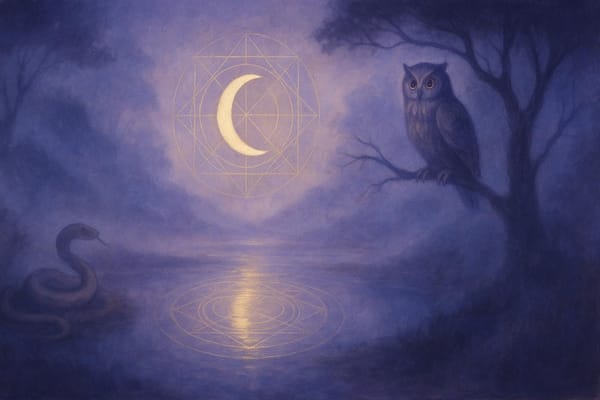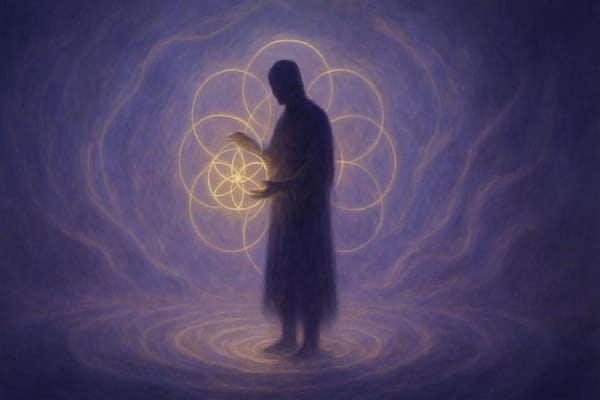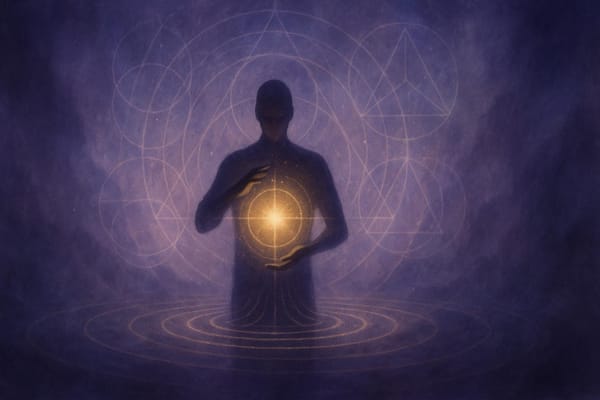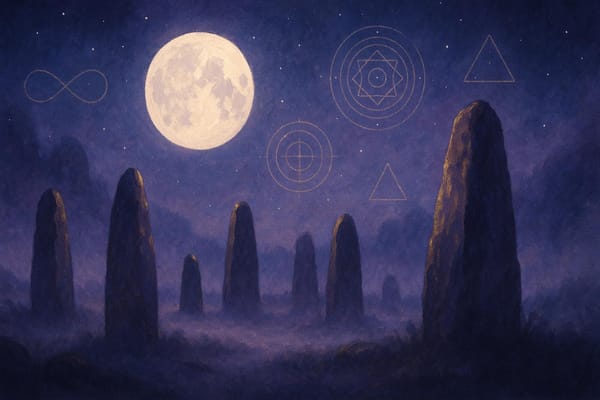Simulation Theory 101
Is reality real — or rendered? This post breaks down Nick Bostrom’s simulation argument, explores scientific and spiritual evidence, and asks what it means to wake up inside a coded universe.
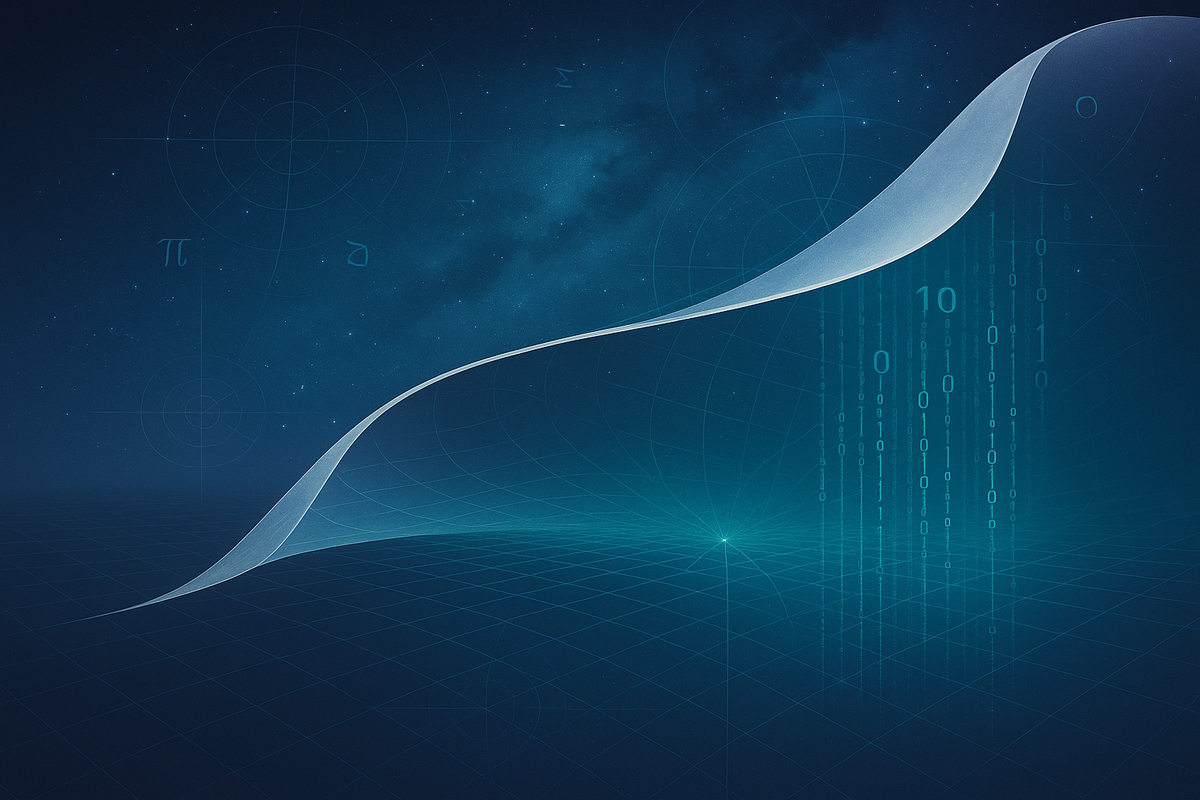
Nick Bostrom’s argument, modern science & the metaphysics of a programmed universe
The Question That Refuses to Go Away
What if none of this is real?
It’s a question that surfaces quietly — in late-night musings, déjà vu, the uncanny echo of a dream you’ve never had. But it’s no longer confined to philosophy seminars or stoner conversations.
It’s now being asked in boardrooms, labs, quantum research centres, and by some of the most rational minds of our time.
Are we living in a simulation?
This question has gone viral — not because it’s outrageous, but because it makes sense.
Because more and more people are noticing the glitches.
Because the science is catching up with the speculation.
And because one quietly brilliant philosopher made the case so clearly, it could no longer be dismissed.
Simulation Theory, in 60 Seconds
At its core, simulation theory proposes this:
The physical world we live in — the one that feels solid, continuous, real — may actually be a sophisticated digital simulation. Not a metaphor. Not a game. A fully immersive, programmed reality generated by a more advanced intelligence.
The source of that simulation could be:
- A posthuman civilisation (i.e. our descendants)
- An advanced non-human intelligence
- A form of divine consciousness using code as its medium
And here’s the kicker: If such simulations are possible, it’s statistically more likely we are inside one than not.
The philosopher who explained why?
Nick Bostrom.
Bostrom’s Simulation Argument: The Trilemma
In 2003, Oxford philosopher Nick Bostrom published a now-famous paper titled Are You Living in a Computer Simulation?
His argument isn’t based on science fiction. It’s based on probability logic.
Bostrom doesn’t say “We’re definitely in a simulation.”
Instead, he presents a trilemma — three possibilities. One of them must be true.
Option 1: Human civilisation will almost certainly go extinct before reaching the technological capability to simulate conscious beings.
Option 2: Advanced civilisations will have no interest in creating ancestor simulations.
Option 3: We are almost certainly living in a simulation.
Let’s unpack that.
If we assume that (a) intelligent life survives long enough, and (b) computing technology continues to accelerate, then it would eventually be possible to run high-fidelity simulations of human history — including conscious agents.
If that’s true, and such simulations are created, it’s logical that there would be billions of simulated realities — and only one base reality.
That makes it far more likely that we’re in a simulated world than the one original world.
As Bostrom put it:
“If there are many simulated minds like ours, and only a few originals, the odds are we're simulated.”
This is not a thought experiment for amusement.
It’s a structured probability model.
And it has shaken the foundations of how we think about reality.
How Science Is Catching Up
Bostrom’s argument isn’t the only pillar under simulation theory.
In fact, several branches of science — often independently — have begun to reveal strange quirks in our universe that look a lot like code.
🔬 Quantum Mechanics
At the quantum level, particles don’t behave like solid matter.
They behave like potentialities — waves of probability that collapse into a defined state only when observed.
This observer effect makes reality appear rendered on demand.
Not unlike how video games conserve resources by only loading what the player can see.
What if reality behaves like this not because it’s quirky — but because it’s simulated?
📏 The Pixelated Universe
At the smallest known scale — the Planck length — space and time are not continuous. They’re quantised.
Discrete. Digital. Like the pixels of a screen.
If space is pixelated, it suggests that there’s a maximum resolution to the universe — the hallmark of a rendered environment.
Physicist John Barrow has speculated that such a digital signature could even degrade over time, like aging code.
🧮 The Math of It All
The deeper physicists go into the structure of reality, the more they find… math.
Theoretical physicist Max Tegmark argues that the universe isn’t just described by mathematics — it is mathematics. Every particle, force, and field can be reduced to numerical structures and rules.
Simulation theory provides a tidy explanation:
We experience a mathematical reality because the universe runs on code.
🤖 Technology Mirrors the Metaphor
Even without physics, our own technological trajectory supports Bostrom’s logic.
- Virtual reality is becoming more immersive every year.
- AI agents are increasingly capable of mimicking thought and emotion.
- Generative simulations (like video games and LLMs) are creating lifelike environments with billions of interactions.
If we can already simulate weather, war, and dialogue — how long before we can simulate entire lifetimes?
Is This Just Sci-Fi?
It might sound like science fiction.
But that doesn’t mean it is.
What makes Bostrom’s argument unique is its detachment from technological specifics.
It doesn’t rely on any particular sci-fi vision of uploading consciousness or living in The Matrix.
Instead, it relies on two simple premises:
- Technological civilisations will eventually be able to simulate realities.
- If they do, they probably will.
That’s it.
If even one advanced civilisation creates even one simulation…
They’ll probably create many.
And if there are many — we are probably in one.
Ancient Echoes: The Oldest Story in the Newest Theory
Simulation theory is modern language for a very old suspicion.
🧱 Plato’s Cave
In the Republic, Plato describes prisoners chained inside a cave, mistaking shadows on the wall for reality — unaware of the world behind them.
It’s one of the first recorded analogies for illusory perception. Sound familiar?
🕊️ Vedanta & Maya
In Indian philosophy, the world of form is called Maya — the great illusion. Not false, but relatively real, like a dream is to the dreamer.
The goal? To wake up and remember the Self beyond the code.
🧬 Gnostic Cosmology
In Gnostic teachings, the material world is the creation of a false god (the Demiurge), who traps souls in illusion. Salvation comes through gnosis — direct, inner knowledge of the divine beyond the simulation.
Simulation theory might be dressed in computer metaphors — but the spiritual subtext has been there all along.
So… What If It’s True?
If simulation theory is correct, then:
- The universe is not less meaningful, but differently meaningful
- Consciousness may be non-local, not generated by the brain, but transmitted through it
- Our lives are not random accidents of biology, but intentional instances
- And awakening… might be the moment the Player becomes aware of the Game
The big shift here is not whether life is simulated, but whether you’re aware that it is.
This doesn’t mean the world is fake.
It means the world is structured.
And if it’s structured, it can be explored. Navigated. Shifted. Bent. Played.
The real question isn’t, “Are we in a simulation?”
It’s:
“If we are… what do I choose to do with that knowledge?”
Because inside a simulation, awareness is the ultimate power-up.
And you just picked it up.
Ready to step beyond information and into activation?
This blog is part of an ongoing personal study — a living exploration of simulation theory, manifestation, and reality-bending. If something here resonated, you’re not here by accident.
Join the journey.
Get deeper insights, tools, and transmissions delivered to your inbox: no noise, no fluff — just real signals for seekers.

